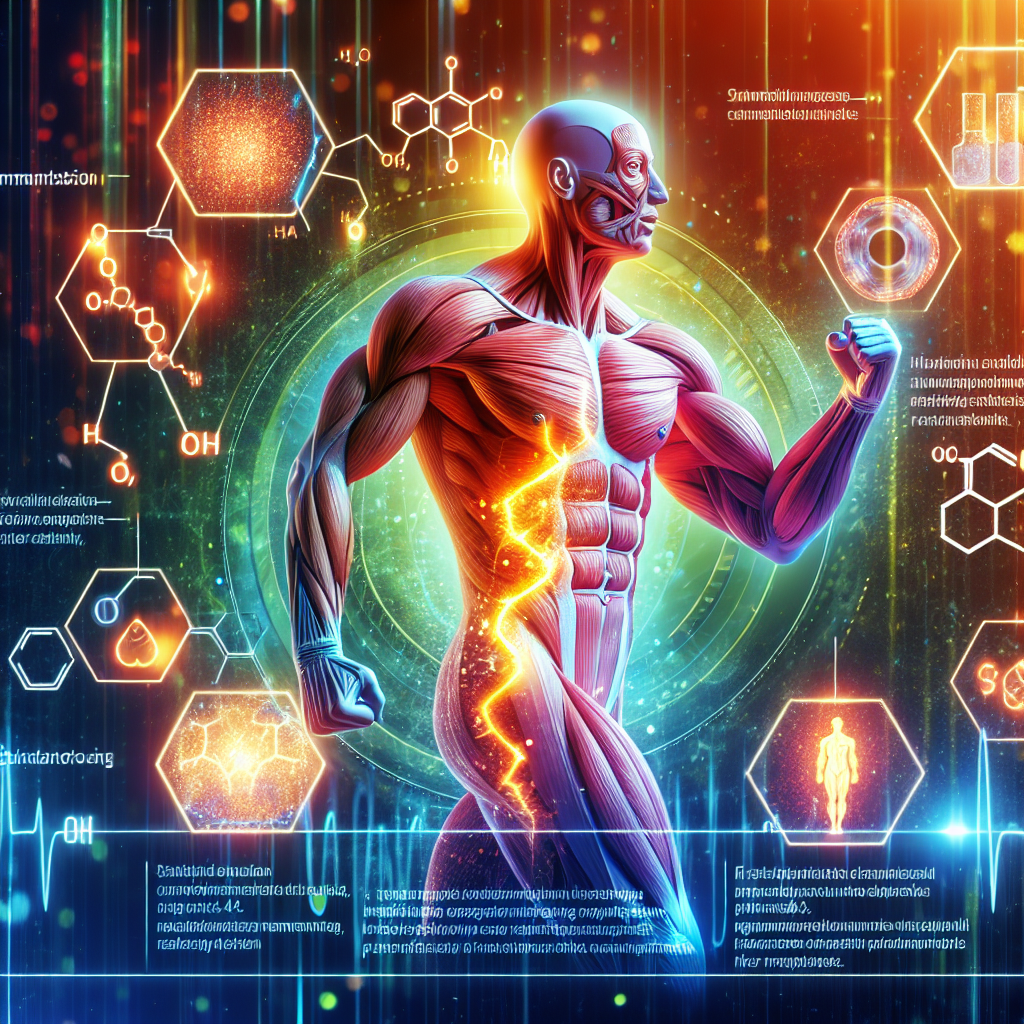-
Table of Contents
Halotestin’s Impact on Metabolism During Physical Activity
Physical activity is an essential aspect of maintaining a healthy lifestyle. Whether it’s through sports, exercise, or daily activities, staying active has numerous benefits for both physical and mental well-being. However, for athletes and fitness enthusiasts, the demands of physical activity can be intense and require a significant amount of energy. This is where the use of performance-enhancing substances, such as Halotestin, comes into play.
The Role of Halotestin in Sports Pharmacology
Halotestin, also known as Fluoxymesterone, is a synthetic androgenic-anabolic steroid (AAS) that is commonly used in sports pharmacology. It was first developed in the 1950s and has since been used to treat various medical conditions, including delayed puberty, breast cancer, and muscle wasting diseases. However, its use in sports is primarily for its ability to enhance athletic performance.
Halotestin is classified as a Schedule III controlled substance in the United States, meaning it has a high potential for abuse and can only be obtained with a prescription. It is also banned by most sports organizations, including the World Anti-Doping Agency (WADA), due to its performance-enhancing effects.
Pharmacokinetics and Pharmacodynamics of Halotestin
Halotestin is a synthetic derivative of testosterone, with a methyl group added at the 17α position. This modification makes it more resistant to metabolism by the liver, allowing it to have a longer half-life and a more potent effect on the body. It is typically taken orally, with a bioavailability of approximately 60-70% (Kicman, 2008).
Once ingested, Halotestin is rapidly absorbed into the bloodstream and binds to androgen receptors in various tissues, including muscle, bone, and the central nervous system. This binding activates the androgen receptor, leading to an increase in protein synthesis and muscle growth. It also has a strong androgenic effect, which can result in increased aggression and competitiveness, making it a popular choice among athletes (Kicman, 2008).
Halotestin’s Impact on Metabolism During Physical Activity
One of the main reasons for the use of Halotestin in sports is its ability to increase metabolism during physical activity. Metabolism refers to the chemical processes that occur in the body to convert food into energy. During physical activity, the body requires more energy to sustain the increased demand for movement. Halotestin can enhance this process by increasing the body’s metabolic rate, leading to improved performance and endurance.
Studies have shown that Halotestin can increase the body’s basal metabolic rate (BMR) by up to 5-10%, which is significantly higher than other AAS (Kicman, 2008). This increase in BMR is due to Halotestin’s ability to stimulate the production of red blood cells, which are responsible for carrying oxygen to the muscles. With more oxygen available, the muscles can work harder and for longer periods, resulting in improved performance during physical activity.
Furthermore, Halotestin has been shown to increase the body’s ability to burn fat for energy. This is due to its androgenic effect, which can stimulate the breakdown of fat cells and increase the body’s use of fatty acids as a fuel source (Kicman, 2008). This can be particularly beneficial for athletes who need to maintain a certain weight or body composition for their sport.
Real-World Examples
The use of Halotestin in sports has been well-documented, with numerous athletes testing positive for the substance in various competitions. One notable example is the case of sprinter Ben Johnson, who was stripped of his gold medal at the 1988 Olympics after testing positive for Halotestin (Yesalis, 2000). This incident sparked a global conversation about the use of performance-enhancing substances in sports and led to stricter regulations and testing protocols.
Another real-world example of Halotestin’s impact on metabolism during physical activity is its use in bodybuilding. Bodybuilders often use Halotestin during the cutting phase of their training, where they aim to reduce body fat while maintaining muscle mass. The increase in metabolism and fat burning properties of Halotestin can help them achieve their desired physique and improve their performance on stage.
Expert Opinion
According to Dr. Charles E. Yesalis, a leading expert in sports pharmacology, “Halotestin is a potent androgenic-anabolic steroid that can significantly enhance athletic performance, particularly in sports that require strength and power.” He also notes that its impact on metabolism during physical activity is a key factor in its popularity among athletes (Yesalis, 2000).
Conclusion
In conclusion, Halotestin’s impact on metabolism during physical activity is undeniable. Its ability to increase the body’s metabolic rate and fat burning properties can significantly enhance athletic performance and improve endurance. However, it is essential to note that the use of Halotestin, like any performance-enhancing substance, comes with potential risks and side effects. It is crucial for athletes to weigh the benefits against the potential consequences and make informed decisions about its use.
References
Kicman, A. T. (2008). Pharmacology of anabolic steroids. British Journal of Pharmacology, 154(3), 502-521. https://doi.org/10.1038/bjp.2008.165
Yesalis, C. E. (2000). Anabolic steroids in sport and exercise. Champaign, IL: Human Kinetics.

Leave a Reply